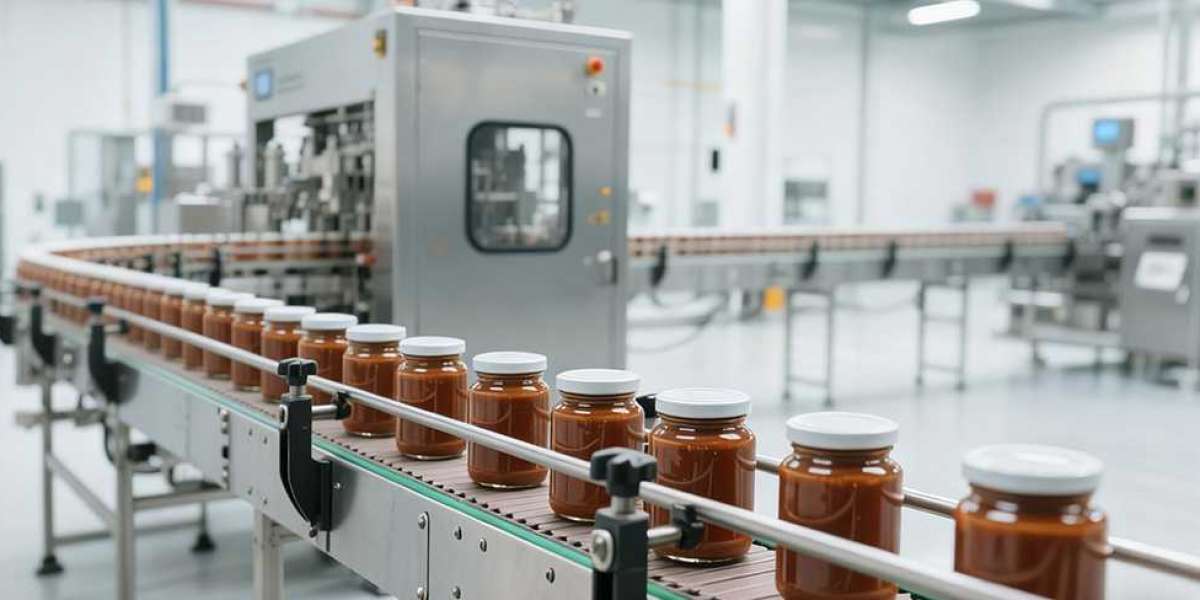For sauce producers—whether making ketchup, salad dressing, BBQ sauce, or chili paste—a smooth flow from filling to packaging is critical. Bottlenecks, misaligned equipment, or inefficient processes waste product, slow output, and raise costs. Optimizing this flow isn’t just about speed—it’s about consistency, quality, and profitability. The right combination of a sauce filling machine, Capping Machine, and labeling machine, plus smart operational tweaks, creates a seamless line that runs like clockwork. Below are actionable steps to optimize every stage from filling to final packaging.
Choose a Sauce Filling Machine Tailored to Your Sauce’s Needs
The sauce filling machine is the heart of your production line—choosing one that fits your sauce’s texture and output eliminates early bottlenecks.
- Match machine type to viscosity: Thin sauces (soy sauce, vinegar-based dressings) work with gravity or overflow fillers for fast, even fills. Thick or chunky sauces (peanut butter, salsa, chili sauce) need piston or gear pump fillers—these push dense mixtures without clogs.
- Prioritize adjustable speed and precision: Look for machines with speed controls (20–120 bottles per minute) to sync with downstream equipment. Precision filling (±1% accuracy) avoids overfills (wasted sauce) or underfills (customer complaints).
- Opt for easy cleaning and hygiene: Sauce residue builds up quickly, leading to bacteria growth or equipment jams. Choose machines with detachable stainless steel parts, smooth surfaces, and optional Clean-in-Place (CIP) systems for fast, thorough cleaning between batches.
- Adapt to bottle sizes: A flexible machine handles multiple bottle types (250ml jars, 500ml squeeze bottles, 1L containers) without major retooling. This lets you switch product lines easily and meet different customer demands.
A salsa brand swapped a generic filler for a piston-style sauce filling machine—they cut clog-related downtime by 60% and increased daily output by 30%.
Sync Your Capping Machine for Speed and Seal Integrity
A poorly matched Capping Machine creates bottlenecks and risks leaks—two costly issues for sauce production. Optimize it to work in harmony with your filler:
- Choose the right capping technology: Screw caps (common for jars) need spindle cappers that apply consistent torque. Snap caps or pump dispensers require specialized cappers with gentle pressure to avoid damaging lids. Forsauce with high acidity (like tomato sauce), pick cappers with airtight sealing to prevent spoilage.
- Align speed with the filling machine: If your filler runs at 50 bottles per minute, your Capping Machinemust match that pace. Adjustable speed controls let you fine-tune—too slow, and bottles pile up; too fast, and caps are loose or cross-threaded.
- Invest in automatic lid feeding: Manual lid placement wastes time and leads to misalignment. A Capping Machinewith an automatic lid feeder delivers lids to the capping head smoothly, cutting labor time and improving accuracy.
- Test seal integrity regularly: Leaky caps ruin sauce and damage your brand. Use simple tests (submerge capped bottles in water, check for bubbles) or pressure sensors to ensure every cap is sealed tight.
A BBQ sauce producer upgraded to a speed-synced Capping Machine with automatic lid feeding—they reduced leak-related waste by 75% and cut labor costs by $8,000 annually.
Optimize Labeling Machine for Accuracy and Efficiency
Labeling is the final step in packaging—mistakes here mean unsellable products or rework. Get the most from your labeling machine to keep the line moving:
- Ensure compatibility with bottle shapes and labels: Sauce bottles come in round, square, or irregular shapes. Choose a labeling machine with adjustable guide rails and sensors to handle different designs. It should also work with your label materials (paper, plastic, waterproof films) to avoid peeling or wrinkling.
- Sync speed with capping and filling: The labeling machine’s speed must match the rest of the line. A well-synced system moves bottles from filling to capping to labeling without pauses, maximizing throughput.
- Prioritize precision alignment: Crooked or off-center labels look unprofessional. Look for machines with optical sensors that detect bottle positions and adjust label placement automatically. This cuts rework (peeling and reapply labels) and keeps the line running smoothly.
- Simplify changeovers: If you switch between product lines (e.g., ketchup to mustard), the labeling machine should allow quick adjustments to label size and placement. Tool-less changeovers reduce downtime between batches.
A salad dressing brand added a sensor-equipped labeling machine—crooked labels dropped from 10% to less than 1%, saving 5 hours of rework per week.
Streamline Line Layout and Conveyor Systems
Even the best individual machines fail if the line layout is inefficient. A well-designed layout eliminates bottlenecks and reduces manual handling:
- Keep conveyors level and continuous: Uneven or disconnected conveyors cause bottles to tip, jam, or spill. Ensure the filler, Capping Machine, and labeling machine are aligned on a single, level conveyor system. This lets bottles move seamlessly from one step to the next without manual intervention.
- Minimize distance between machines: Place equipment close together (but not overcrowded) to reduce bottle travel time. Shorter conveyor runs mean fewer chances of jams or misalignment.
- Leave space for maintenance: Crowded lines make cleaning and repairs difficult. Leave 1–2 feet of space around each machine so your team can access parts, clean surfaces, or fix issues quickly.
- Add buffer zones for peak demand: During busy production runs, a small buffer area between the filler and capper prevents bottle backups. This gives operators time to adjust settings or clear minor jams without stopping the entire line.
A small-batch hot sauce business rearranged their line for continuous conveyor flow—their daily output increased by 40% without buying new equipment.
Train Teams and Maintain Equipment for Consistent Performance
Smooth flow relies on well-trained operators and well-maintained machines. Neglecting either leads to slowdowns and errors:
- Train staff on all equipment: Ensure your team knows how to adjust speeds, troubleshoot common issues (e.g., filler clogs, capper jams), and perform basic cleaning. Untrained operators often cause avoidable downtime—invest 1–2 days of training to keep the line running.
- Schedule daily cleaning and regular maintenance:
- Clean the sauce filling machine’s nozzles, tanks, and conveyors after each shift to remove sauce residue.
- Check the Capping Machinefor worn gaskets, loose parts, or dull capping heads monthly—replace parts promptly to avoid leaks.
- Lubricate moving parts of the labeling machine (rollers, sensors) to prevent jams and ensure smooth operation.
- Track performance and fix bottlenecks: Keep a log of production times, downtime causes, and waste levels. If the capper is consistently slower than the filler, adjust its speed or upgrade to a higher-capacity model. If the filler clogs often, switch to a machine with wider nozzles or a more powerful pump.
A commercial sauce producer implemented daily maintenance checks and operator training—unplanned downtime dropped by 50%, and waste reduced by 25% in three months.
Optimizing sauce production’s filling to packaging flow is about three core elements: choosing the right sauce filling machine and Capping Machine, integrating a compatible labeling machine, and streamlining layout and operations. By matching equipment to your sauce’s needs, syncing speeds, and investing in training and maintenance, you’ll cut waste, boost output, and improve product quality. A smooth flow doesn’t just save time—it directly increases profitability by reducing costs and meeting customer demand consistently.
Every bottleneck in the line eats into your profits. Small, targeted tweaks to equipment and processes add up to big improvements. With the right approach, your production line will run efficiently, reliably, and profitably for years.








